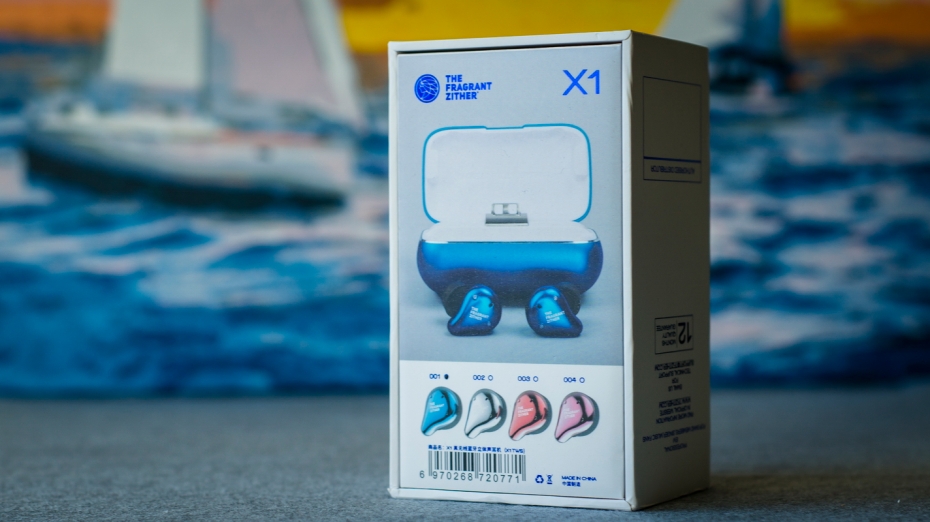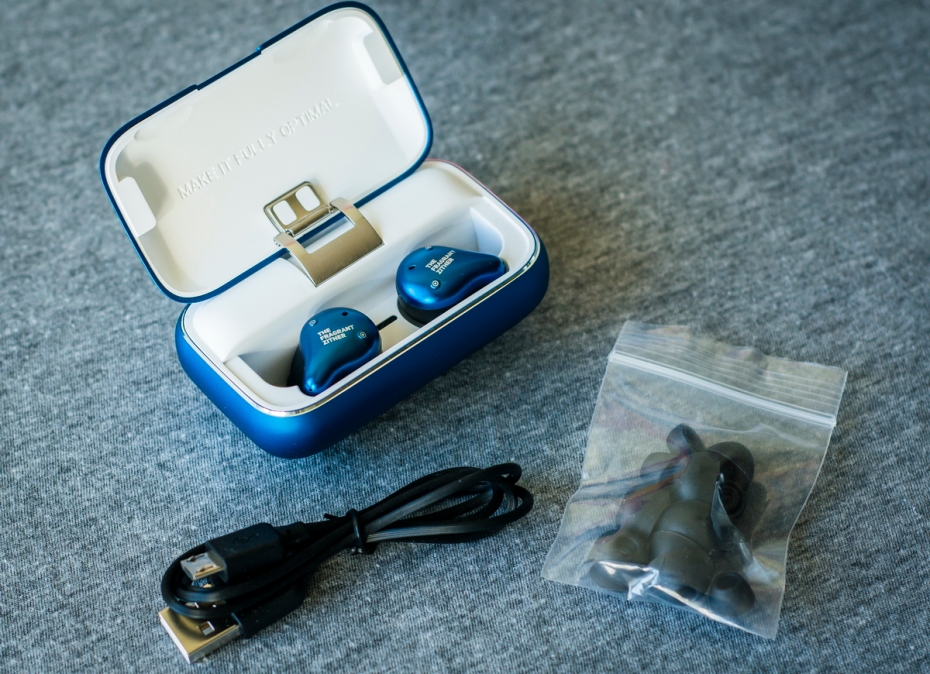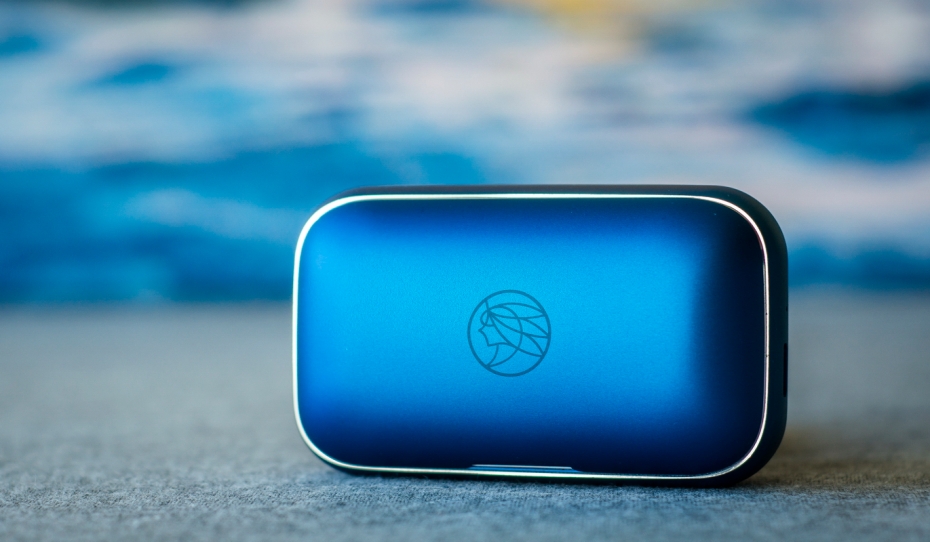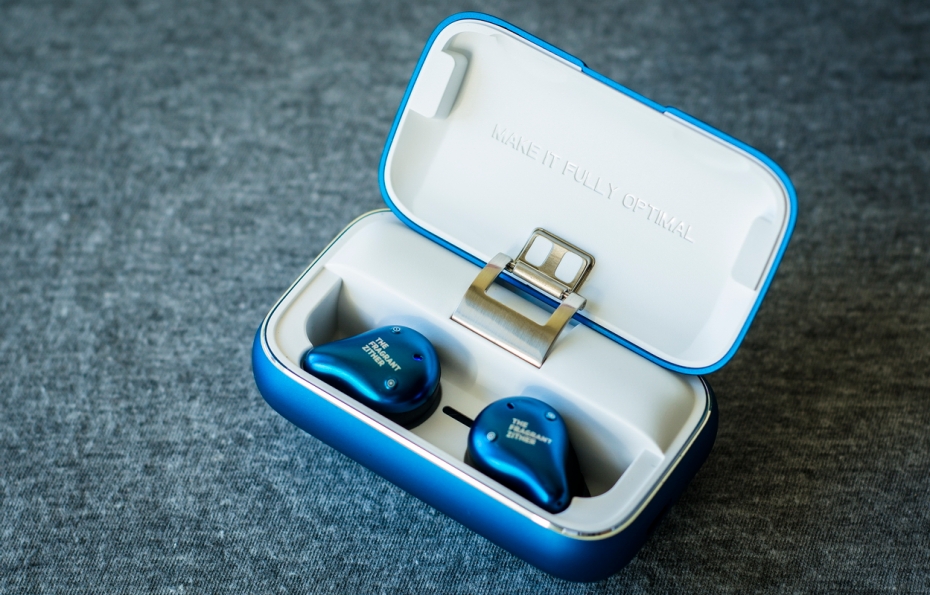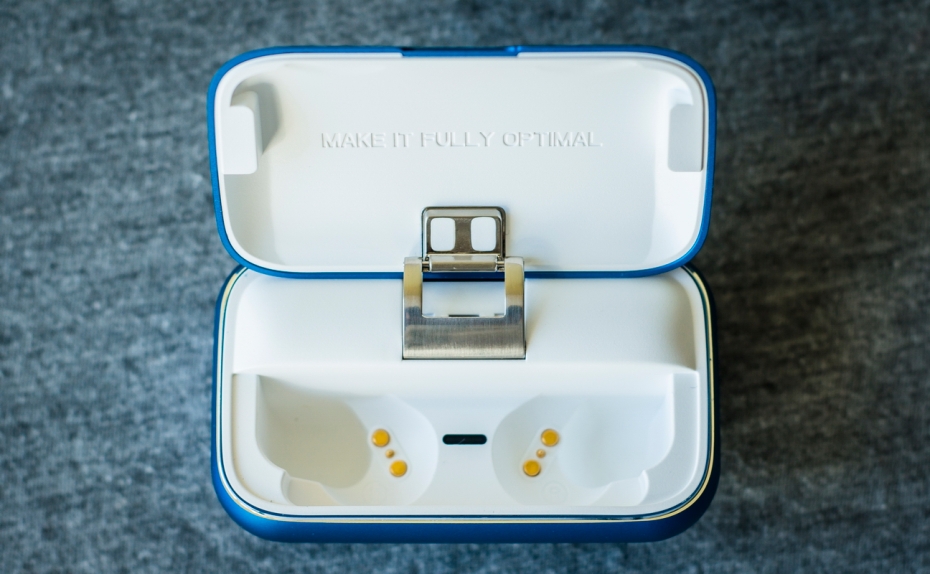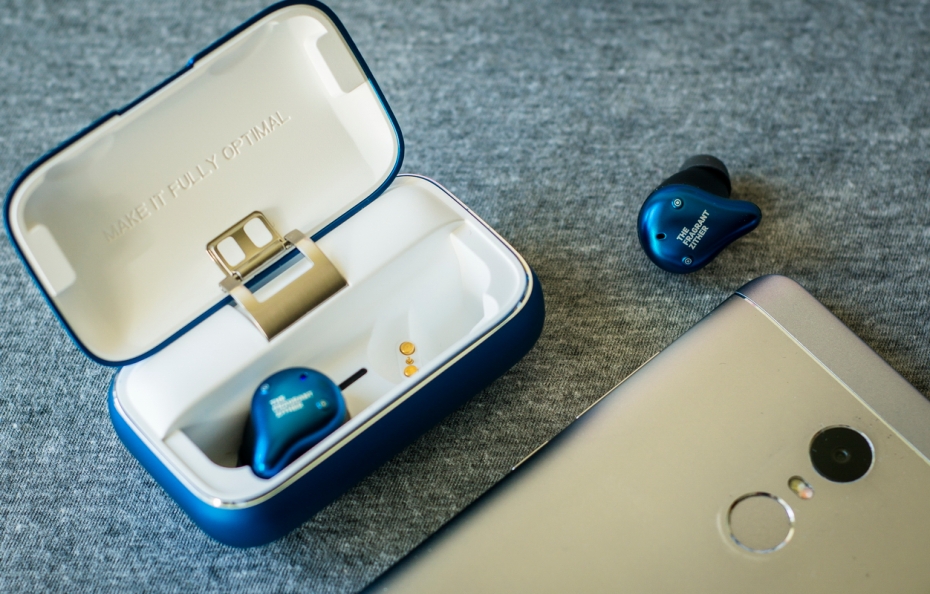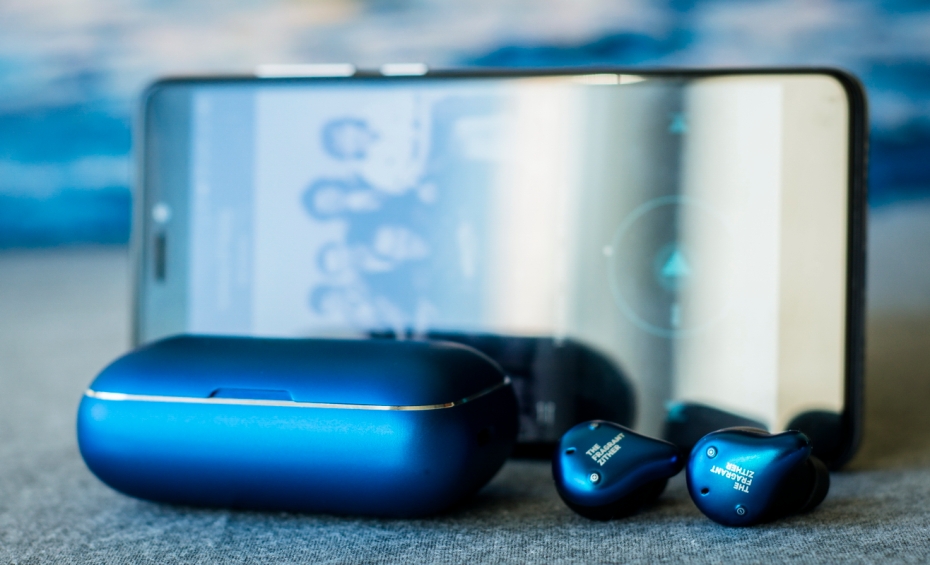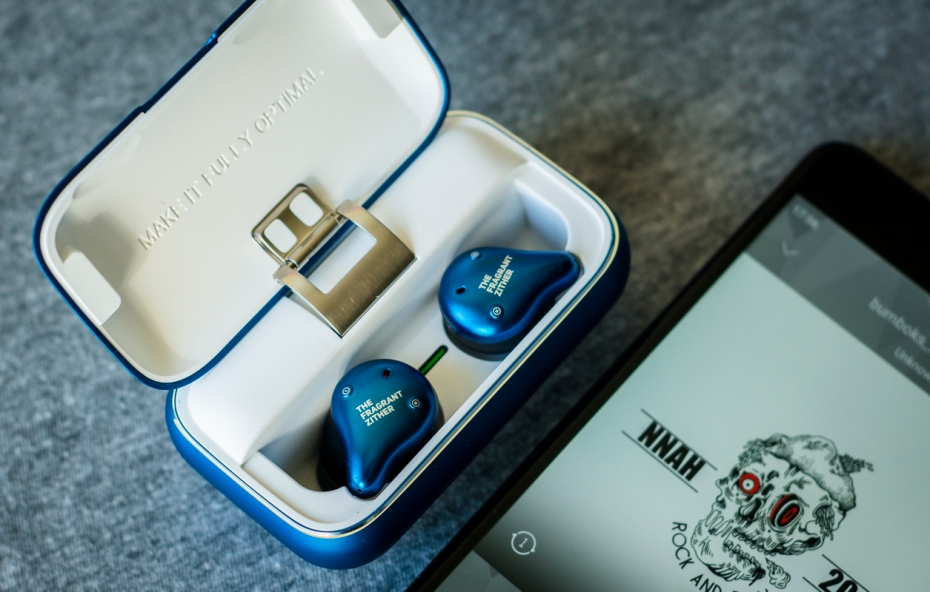Introduction
TFZ bets on the TWS IEMS. There are already a few models of this type, which he has brought to market. The technology still has some way to go, in the TWS range, but the efforts can be felt. This time, the X1 model, combines a premium appearance, almost luxury, with small and very ergonomic capsules. In addition, the capsules are equipped with Bluetooth 5.0 and a full-frequency single BA. Each IEM has two independent physical buttons, allowing a variety of functions and a standby time of over 100 hours. Among other features, apart from the variety of protocols supported, we can highlight: the pairing memory, 20 meters of distance between transmitter and capsules, IP67, automatic interconnection, volume control from the capsules, possibility of using each capsule with a different mobile ... and a long etcetera, which I will break down, throughout this review.


Specifications


Packaging
The TFZ X1, come in a small box, dimensions 139x80x64mm. Its color is white. On the main side, there is the name of the brand and model, in capital letters, written with blue reflective ink. In fact, this type of ink has been used throughout the text of the box. On the back, there is a photo of the cargo box and the capsules, as well as four small photos of individual capsules, one of each colour, to indicate, by using a dot, the model inside. After removing the lid, the charging box appears, arranged in a white mould. On the upper side, there is a tab, which facilitates the removal of the mould, to access the rest of the accessories. These are located in a cardboard box, completely white and smooth. In it there is a USB cable, the instruction manual in Chinese and English and 12 silicone tips. In the capsules come two more tips. In short, the complete content is:
The connections of the capsules are protected with plastic sheets, as a "Tamper-Evident".
Some bags are missing to protect the load box from scratches. Also, some kind of foam tips. Although, we appreciate the two types of silicone tips.


Construction and Design
The size of the charging box is 76x30x45mm. It feels heavy, as it is made of 17-layer metal alloy plate. Its surface is textured and its micro rough touch offers a pleasant anti-slip feeling. Its shape is a parallelepiped, whose edges and corners have been strongly rounded, obtaining an oval profile and a box free of edges. The main model in this review is medium grey, very elegant, exerting a deep premium feeling. On the top cover, the brand's logo is silk-screened in a slightly darker shade of grey. The edge under the lid has been lowered, revealing the silver color of the metal. In the central part of the lid's slot, there is a small bevel that allows it to be opened. On the underside of the box, there is a text: the model name, a small description of the box, the charging specifications and the battery capacity. This is a 3.7V/2600mAh battery. For charging, a 5V and 1A input is recommended. The lid is magnetized, to ensure a sealed closure. On the right side, there is a USB port for charging, it is a micro-B type. On the right side, there is a small hole, inside which, there is a green LED, which indicates the charging status.
The interior of the charging box is completely white, with a large metal hinge in the centre. The interior material looks like plastic, but it is very rigid. On the inside of the lid, the following text is inscribed: "MAKE IT FULLY OPTIMAL". The capsules fit into the lower half of the box. In the column separating the base of each one, there is a horizontal LED, which allows to see the state of its load. The box allows to load 15 times the capsules.
The capsules have an outer face covered with a plate, which simulates metal, although I think it is rigid plastic. It's gray, like the charging box, but a lighter shade. The shape of this face is very rounded, simulating a drop of water, but very stylized and thin. In the lower vertex there is a hole, for the microphone. The name of the brand is written, in white letters and diagonally, in its center. On either side, there are two tiny physical buttons. On the right capsule, the left button has the + sign drawn on it and the right button has a dot. In the left capsule, the right button has the dot and the left button has the - sign. In the centre, above the letters and text, there is an oval hole, inside which there is an LED, which can shine in different colours, to indicate the status of the current operation. The inner side is made of textured plastic and black. Its shape is very rounded and smooth. In its center, there are three round connectors, of equal size at the ends, smaller in the center. On the inner face of the apex, with tiny letters, the side of the channel is specified. The nozzles are very short, 3mm high. They have two diameter sizes, the smaller one is located at its base and is 4.6mm. The largest and outermost is 5.6mm. The nozzles are protected by metal grids.
The construction of the capsules contrasts with the construction of the charging box, as they are very light. Because of their exterior design, it looks like they will be heavier, but the material used, some kind of plastic, guarantees the opposite. No fragility is felt in the capsules, despite their minimum weight of 4.6g.
The version of Bluetooth is 5.0. This version guarantees a separation of the transmitter, up to 20m. The capsules are IP67 certified against water and splashes. They have a 60mA battery, which provides a duration of more than 100 hours on standby and between 5 and 7 hours of call.
The driver used is a Single Full-Frequency Balanced Armature. The interior of the capsules uses independent acoustic sound cavities. For this model, they have used the eighth generation of sound reduction technology.


Adjustment and Ergonomics
The nozzles of the capsules are very short. At first, I had quite a few doubts about the fit and ergonomics. The silicone tips have a very narrow core, which makes it difficult to insert them into the mouthpieces. Also, the core is very short, so the fit is very shallow. The silicone used in the tips is quite thin and not very rigid. My fears were increased when I saw all these conditions... But I was quite wrong. Trying the cylindrical tips, the larger size has been perfect, ensuring a very high seal and getting a feeling of vacuum, which provides a high level of isolation. In the same way, the sound achieved with these tips has been the best, having tried more than 20 different models. With them I have achieved the greatest comfort, the best bass and a high clarity, compared to the rest of the models.
There is no doubt that they have been designed to provide the best ergonomics, fit and comfort. The result is a very durable lace and a great feeling of freedom.


Operation and Connection
The TFZ X1, have two small physical buttons, per capsule. On the right capsule, once placed on the ear, the one behind it has the + sign. The one in front has a dot on it. In the left capsule, once placed on the ear, the one behind it has a dot. The one in front is marked with a -.
To charge the capsules, place them on their base and wait for the LEDs to light red. While charging, the red light flashes. When the charging is complete, the LED will turn off. The LED on the base will be green, while charging.
The IEMS enter pairing mode, when they are taken out of the base, at the same time. This mode lasts 10 seconds. If after this time, they have not been paired, they can be put back into the base or turned off and on, from the buttons. When they have been paired, the LED on the right capsule lights up in flashing blue.
Either the two capsules or one capsule can be paired. To pair a capsule, first turn on the device's Bluetooth. Then, press the button with the dot for 3 seconds.
Once paired to the Smartphone, a short press on the Dot Button will accept/hang up the call. To reject a call, two short presses are required.
During music playback, a short press on the dot button resumes or pauses the music.
Of course, the + and - buttons, increase or decrease the volume, either playing music or calls.
During music playback, a 2s press on the + button advances the song. If this is done, the previous song will be played.
To delete all linked devices while the capsules are off, press the dot button for 8 seconds. If it is pressed for 10s, a reset of the IEMS.
I've connected the X1s to every Bluetooth device I own:
The tests made with my Smartphone, used for calls, have revealed a great performance in its operation. The voices sound very sharp, clear, powerful and free from any interference. And, most importantly, I have not received any complaints about the reception of my voice, which makes them my favorite IEMS TWS for use with my mobile. This demonstrates the effectiveness of noise cancellation, tested in noisy environments, with the TV or with more people talking around.
The volume is quite adequate in all situations, although it is not the highest, compared to other models I own. But it will certainly be enough for the vast majority, especially for use with the mobile phone.
The only disadvantage is that the buttons on the capsules are very small and somewhat hard to press.


Sound
Notice
Before we talk about the sound, I must clarify that, personally, I think that the TWS IEMS cannot yet be compared with wired IEMS. It should be understood that there are many technical differences between traditional IEMS and TWS. Therefore, my description of the sound will be restricted to the TWS, taking into account their current characteristics.
The TWS must have a Bluetooth receiver, an audio signal converter, an amplifier, a microcontroller, physical or touch buttons and a battery. All this in a small space. In addition, the signal transmitted by Bluetooth is compressed, coded and decoded again in the headset.

Profile
The TFZ X1 has a slightly warm profile, with a good presence of mids and soft highs.

Bass
The bass of a Single Driver BA is always complicated, especially if the technology used is Bluetooth. But this time, if the original recording is good and the bass is not out of control, the X1 can provide a good presence, as well as depth, free of unnatural effects. In that scenario, the bass has a good pattern, quite acceptable linearity and speed, as well as a nice color and smooth texture. The mid-bass doesn't stand out much from the sub-bass. Thus, both the depth and the beat remain very close to each other, offering a presence above neutrality, which brings a lot of warmth to the profile. And that's a lot of good, from what you can tell about a Single BA.

Mids
The mid zone is the range with the best expression and treatment of these IEMS. Despite the warmth of BA, its presence is close and there is no lack of body. The clarity is not absolute, but there is a good tendency towards light, although the heat of the lower zone is noticeable. It is in this area that the driver's best skill is demonstrated, offering greater precision, as well as a more decisive and agile performance. This is something you can notice, both in the voices of the music, and in the calls. The instrumentation, thanks to these qualities, shine with better detail and expressiveness, achieving, almost, abstract that we are before a Bluetooth IEMS. The only problem I find with the area, is that its high part falls too quickly, limiting a greater clarity and brightness that would have provided some benefits.

Treble
The highs are very soft and are somewhat backward compared to the rest of the ranges. The sibilances are non-existent, but the amount of spark is also smoothed. Given their warm profile, the treble is not very vivid and both the extension and the amount of air are not very large.

Soundstage, Separation
Despite the warmth, the X1 offers a medium scene, with a moderate depth effect. The separation is on the same step, measured, but pleasant, without feeling of congestion or claustrophobia. The limitation of the high range also cuts down on the level of detail, especially at the micro level. Outside the mid-range, the nuances do not feel exposed, and the analytical capacity of the system is reduced in this way. But, in the central zone, the definition is quite good, being evident, where the driver of the X1 shines.

Conclusion
The TFZ X1 are the most elegant IEMS TWS I have been able to test, starting from their charging base, down to the smallest detail of the capsules. This time, TFZ has chosen to mount a BA driver, which provides many advantages in its sound (clarity, warmth and a good midrange), which are then transmitted in the quality of the calls. Its ergonomics is crucial, as well as the usability and quality of its microphone; providing, a great satisfaction of use with the Smartphone. Technology continues to advance and the X1 is on the right path.

Sources Used During the Analysis
Ratings
Purchase Link
My full review in Spanish
TFZ bets on the TWS IEMS. There are already a few models of this type, which he has brought to market. The technology still has some way to go, in the TWS range, but the efforts can be felt. This time, the X1 model, combines a premium appearance, almost luxury, with small and very ergonomic capsules. In addition, the capsules are equipped with Bluetooth 5.0 and a full-frequency single BA. Each IEM has two independent physical buttons, allowing a variety of functions and a standby time of over 100 hours. Among other features, apart from the variety of protocols supported, we can highlight: the pairing memory, 20 meters of distance between transmitter and capsules, IP67, automatic interconnection, volume control from the capsules, possibility of using each capsule with a different mobile ... and a long etcetera, which I will break down, throughout this review.


Specifications
- Bluetooth version: BT5.0
- Calling time: 5-7hours
- Bluetooth distance: ≤20m
- Charging case battery: 2600mA
- Earphones battery: 3.7V 60mA*2
- Frequency response range: 20Hz-20000Hz
- Mic:-42db
- Charging time: ≤2 hours
- LED light color: Red-blue
- Three-way call: Support
- Support agreement :A2DP AVRCP HFP SPP PBAP
- Size: 76x30x45mm


Packaging
The TFZ X1, come in a small box, dimensions 139x80x64mm. Its color is white. On the main side, there is the name of the brand and model, in capital letters, written with blue reflective ink. In fact, this type of ink has been used throughout the text of the box. On the back, there is a photo of the cargo box and the capsules, as well as four small photos of individual capsules, one of each colour, to indicate, by using a dot, the model inside. After removing the lid, the charging box appears, arranged in a white mould. On the upper side, there is a tab, which facilitates the removal of the mould, to access the rest of the accessories. These are located in a cardboard box, completely white and smooth. In it there is a USB cable, the instruction manual in Chinese and English and 12 silicone tips. In the capsules come two more tips. In short, the complete content is:
- The charging box.
- The two TWS capsules.
- USB cable.
- 3 pairs of silicone tips, conical shape, sizes SxMxL.
- 4 pairs of silicone tips, with a more cylindrical shape, sizes SxMxLxXL.
- Instruction manual.
The connections of the capsules are protected with plastic sheets, as a "Tamper-Evident".
Some bags are missing to protect the load box from scratches. Also, some kind of foam tips. Although, we appreciate the two types of silicone tips.


Construction and Design
The size of the charging box is 76x30x45mm. It feels heavy, as it is made of 17-layer metal alloy plate. Its surface is textured and its micro rough touch offers a pleasant anti-slip feeling. Its shape is a parallelepiped, whose edges and corners have been strongly rounded, obtaining an oval profile and a box free of edges. The main model in this review is medium grey, very elegant, exerting a deep premium feeling. On the top cover, the brand's logo is silk-screened in a slightly darker shade of grey. The edge under the lid has been lowered, revealing the silver color of the metal. In the central part of the lid's slot, there is a small bevel that allows it to be opened. On the underside of the box, there is a text: the model name, a small description of the box, the charging specifications and the battery capacity. This is a 3.7V/2600mAh battery. For charging, a 5V and 1A input is recommended. The lid is magnetized, to ensure a sealed closure. On the right side, there is a USB port for charging, it is a micro-B type. On the right side, there is a small hole, inside which, there is a green LED, which indicates the charging status.
The interior of the charging box is completely white, with a large metal hinge in the centre. The interior material looks like plastic, but it is very rigid. On the inside of the lid, the following text is inscribed: "MAKE IT FULLY OPTIMAL". The capsules fit into the lower half of the box. In the column separating the base of each one, there is a horizontal LED, which allows to see the state of its load. The box allows to load 15 times the capsules.
The capsules have an outer face covered with a plate, which simulates metal, although I think it is rigid plastic. It's gray, like the charging box, but a lighter shade. The shape of this face is very rounded, simulating a drop of water, but very stylized and thin. In the lower vertex there is a hole, for the microphone. The name of the brand is written, in white letters and diagonally, in its center. On either side, there are two tiny physical buttons. On the right capsule, the left button has the + sign drawn on it and the right button has a dot. In the left capsule, the right button has the dot and the left button has the - sign. In the centre, above the letters and text, there is an oval hole, inside which there is an LED, which can shine in different colours, to indicate the status of the current operation. The inner side is made of textured plastic and black. Its shape is very rounded and smooth. In its center, there are three round connectors, of equal size at the ends, smaller in the center. On the inner face of the apex, with tiny letters, the side of the channel is specified. The nozzles are very short, 3mm high. They have two diameter sizes, the smaller one is located at its base and is 4.6mm. The largest and outermost is 5.6mm. The nozzles are protected by metal grids.
The construction of the capsules contrasts with the construction of the charging box, as they are very light. Because of their exterior design, it looks like they will be heavier, but the material used, some kind of plastic, guarantees the opposite. No fragility is felt in the capsules, despite their minimum weight of 4.6g.
The version of Bluetooth is 5.0. This version guarantees a separation of the transmitter, up to 20m. The capsules are IP67 certified against water and splashes. They have a 60mA battery, which provides a duration of more than 100 hours on standby and between 5 and 7 hours of call.
The driver used is a Single Full-Frequency Balanced Armature. The interior of the capsules uses independent acoustic sound cavities. For this model, they have used the eighth generation of sound reduction technology.


Adjustment and Ergonomics
The nozzles of the capsules are very short. At first, I had quite a few doubts about the fit and ergonomics. The silicone tips have a very narrow core, which makes it difficult to insert them into the mouthpieces. Also, the core is very short, so the fit is very shallow. The silicone used in the tips is quite thin and not very rigid. My fears were increased when I saw all these conditions... But I was quite wrong. Trying the cylindrical tips, the larger size has been perfect, ensuring a very high seal and getting a feeling of vacuum, which provides a high level of isolation. In the same way, the sound achieved with these tips has been the best, having tried more than 20 different models. With them I have achieved the greatest comfort, the best bass and a high clarity, compared to the rest of the models.
There is no doubt that they have been designed to provide the best ergonomics, fit and comfort. The result is a very durable lace and a great feeling of freedom.


Operation and Connection
The TFZ X1, have two small physical buttons, per capsule. On the right capsule, once placed on the ear, the one behind it has the + sign. The one in front has a dot on it. In the left capsule, once placed on the ear, the one behind it has a dot. The one in front is marked with a -.
To charge the capsules, place them on their base and wait for the LEDs to light red. While charging, the red light flashes. When the charging is complete, the LED will turn off. The LED on the base will be green, while charging.
The IEMS enter pairing mode, when they are taken out of the base, at the same time. This mode lasts 10 seconds. If after this time, they have not been paired, they can be put back into the base or turned off and on, from the buttons. When they have been paired, the LED on the right capsule lights up in flashing blue.
Either the two capsules or one capsule can be paired. To pair a capsule, first turn on the device's Bluetooth. Then, press the button with the dot for 3 seconds.
Once paired to the Smartphone, a short press on the Dot Button will accept/hang up the call. To reject a call, two short presses are required.
During music playback, a short press on the dot button resumes or pauses the music.
Of course, the + and - buttons, increase or decrease the volume, either playing music or calls.
During music playback, a 2s press on the + button advances the song. If this is done, the previous song will be played.
To delete all linked devices while the capsules are off, press the dot button for 8 seconds. If it is pressed for 10s, a reset of the IEMS.
I've connected the X1s to every Bluetooth device I own:
- xDuoo X3II
- Tempotec V1-A
- JWD JWM-115
- F.Audio S1
- Xiaomi Redmi Note 8 Pro
The tests made with my Smartphone, used for calls, have revealed a great performance in its operation. The voices sound very sharp, clear, powerful and free from any interference. And, most importantly, I have not received any complaints about the reception of my voice, which makes them my favorite IEMS TWS for use with my mobile. This demonstrates the effectiveness of noise cancellation, tested in noisy environments, with the TV or with more people talking around.
The volume is quite adequate in all situations, although it is not the highest, compared to other models I own. But it will certainly be enough for the vast majority, especially for use with the mobile phone.
The only disadvantage is that the buttons on the capsules are very small and somewhat hard to press.


Sound
Notice
Before we talk about the sound, I must clarify that, personally, I think that the TWS IEMS cannot yet be compared with wired IEMS. It should be understood that there are many technical differences between traditional IEMS and TWS. Therefore, my description of the sound will be restricted to the TWS, taking into account their current characteristics.
The TWS must have a Bluetooth receiver, an audio signal converter, an amplifier, a microcontroller, physical or touch buttons and a battery. All this in a small space. In addition, the signal transmitted by Bluetooth is compressed, coded and decoded again in the headset.

Profile
The TFZ X1 has a slightly warm profile, with a good presence of mids and soft highs.

Bass
The bass of a Single Driver BA is always complicated, especially if the technology used is Bluetooth. But this time, if the original recording is good and the bass is not out of control, the X1 can provide a good presence, as well as depth, free of unnatural effects. In that scenario, the bass has a good pattern, quite acceptable linearity and speed, as well as a nice color and smooth texture. The mid-bass doesn't stand out much from the sub-bass. Thus, both the depth and the beat remain very close to each other, offering a presence above neutrality, which brings a lot of warmth to the profile. And that's a lot of good, from what you can tell about a Single BA.

Mids
The mid zone is the range with the best expression and treatment of these IEMS. Despite the warmth of BA, its presence is close and there is no lack of body. The clarity is not absolute, but there is a good tendency towards light, although the heat of the lower zone is noticeable. It is in this area that the driver's best skill is demonstrated, offering greater precision, as well as a more decisive and agile performance. This is something you can notice, both in the voices of the music, and in the calls. The instrumentation, thanks to these qualities, shine with better detail and expressiveness, achieving, almost, abstract that we are before a Bluetooth IEMS. The only problem I find with the area, is that its high part falls too quickly, limiting a greater clarity and brightness that would have provided some benefits.

Treble
The highs are very soft and are somewhat backward compared to the rest of the ranges. The sibilances are non-existent, but the amount of spark is also smoothed. Given their warm profile, the treble is not very vivid and both the extension and the amount of air are not very large.

Soundstage, Separation
Despite the warmth, the X1 offers a medium scene, with a moderate depth effect. The separation is on the same step, measured, but pleasant, without feeling of congestion or claustrophobia. The limitation of the high range also cuts down on the level of detail, especially at the micro level. Outside the mid-range, the nuances do not feel exposed, and the analytical capacity of the system is reduced in this way. But, in the central zone, the definition is quite good, being evident, where the driver of the X1 shines.

Conclusion
The TFZ X1 are the most elegant IEMS TWS I have been able to test, starting from their charging base, down to the smallest detail of the capsules. This time, TFZ has chosen to mount a BA driver, which provides many advantages in its sound (clarity, warmth and a good midrange), which are then transmitted in the quality of the calls. Its ergonomics is crucial, as well as the usability and quality of its microphone; providing, a great satisfaction of use with the Smartphone. Technology continues to advance and the X1 is on the right path.

Sources Used During the Analysis
- xDuoo X3II
- Tempotec V1-A
- JWD JWM-115
- F.Audio S1
- Xiaomi Redmi Note 8 Pro
Ratings
- Construction and Design: 85
- Adjustment/Ergonomics: 90
- Accessories: 78
- Operation and Connection: 80
- Sound: 72
- Quality/Price: 82
Purchase Link
My full review in Spanish



